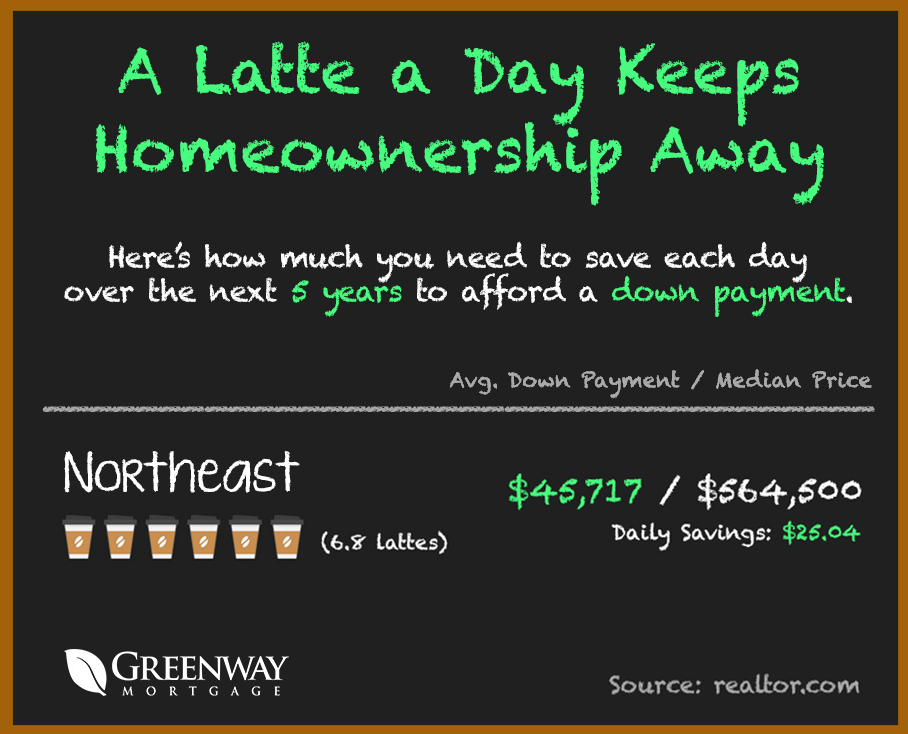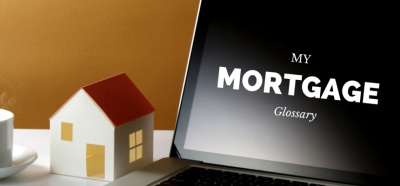- For all the details about Automation and Big data click here. -
Once you have a signed purchase contract on a home, my big data loan approval system kicks in. My team and I have built a technically advanced loan approval system that uses big data and secure integrations to streamline the loan approval process, eliminate paperwork, and close document requests (aka conditions) to quickly and efficiently approve your loan.
During this process, there are a number of documents that you are required to execute and sign. Instead of visiting our office or emailing, printing, signing, and scanning documents, our client portal has E-sign technology that allows you to execute from anywhere. This speeds up the loan approval process and saves a few trees.
Assuming you've fully and accurately completed the application and provided me with access to your financial and employment information during the pre-application phase, I'll be able to get your loan approved and closing scheduled quickly.
One of the greatest benefits of my big data system is the availability of appraisal waivers. Appraisals are the long pole in getting your loan closed. If my system determines that an appraisal is not required for the property, you can save upwards of $400 and shorten the closing timeframe by five to 10 business days.
CLOSING
Now you’re ready to close. Here’s the good news – we use E-closings!
Previously, you had to sit and hand-sign a huge stack of documents with your settlement agent. In addition to coordinating an in-person meeting and possibly missing time from work, the process of signing paper documents could take hours! Now, you can E-sign your mortgage documents remotely and securely at your convenience. Again, this saves time and paper and reduces the risk of error.
Stayed tuned for next week's blog (part 3) on "Clients for Life".
You can learn more about Automation and Big data by clicking here.

Whether you’ve owned a home before or you’re ready to take the leap into homeownership for the first time there are usually a handful of questions around what is required for a down payment and how-to best source down payment assistance. In today’s blog we’ll go over how much you really need for a down payment and how you can get help with down payment and closing costs.
Interesting Statistics About Your Credit Score and Down Payment
- According to a study done from Fannie Mae’s ESR team, fewer than 1-in-4 consumers are aware that low down payment programs exist. With that said, many still don’t know mortgage lenders’ credit score, down payment, or debt-to-income ratio requirements.
- Most people think that you need a minimum credit sore of 650 when actually a 580 is sufficient.
- In regards to down payment, many think that they needed 10%. Some mortgage lenders offer small down payment mortgages — as little as 3% down payment — to borrowers who qualify. Get in touch with your loan office to discuss your options.
How Much Do You Really need for a down payment?
First let’s clear up a common myth. You DO NOT need 20% down for a down payment. A survey from Fannie Mae shows only 17% of consumers know the minimum options are actually between 1 – 5% of the purchase price and 40% don’t know how much they need at all.
.png)
There are many mortgage loans available that require as little as 3% down for first-time buyers, and some ask for only 3.5% down from repeat buyers. There are even loans available for Veterans that provide 0% down payment options too.
Saving for a Down Payment
Saving for a down payment is often the biggest hurdle for a first-time homebuyer. Depending on where you live, median income, median rents, and home prices all vary. However, if you’re planning to put down just 3%, the research shows it may be possible in most states to have enough saved for a down payment in less than a year. That puts homeownership in a much closer reach for many potential buyers, maybe even you!
How can I get help with my down payment?
Regardless of the loans available, many buyers still need assistance with a down payment. The great news is, there are a lot of ways to tap into down payment assistance options:
- Assistance from Family Members:
The (NAR) said, “a third of recent first-time buyers received down payment assistance from family members.” They also mentioned, “the average net worth of those aged 75 and over stands at $264,800…They just might offer the boost the next generation needs to become homeowners.”
That means one of the ways to find help with a down payment is to accept a gift from a family member. If this is an option for you, make sure you talk to your loan officer before you accept the money, to ensure you document the process the way it is required by your loan. This way, it will be received properly and you can still potentially qualify.
- Down Payment Assistance Programs:
With Greenway’s FHA Down Payment Assistance program you only need 3.5% and you can cover some of that with the Down Payment Assistance grant.
What is the FHA Down Payment Assistance Program?
With this program, first-time home buyers can get money for down payment and closing costs. Through NJ’s Housing and Mortgage Finance Agency, Greenway is able to offer first-time buyers in NJ an FHA Mortgage with a $10,000 grant for down payment and closing costs.
Program Details:
- $10,000 towards down payment and closing costs
- All New Jersey properties eligible (no zone restrictions)
- First-time buyer is anyone that has never owned a home or hasn't owned in the last 3 years
Fine Print:
- Approved counseling required
- 3yrs tax returns, NJ and Fed
- 3mo bank statements
- Borrowers with funds to cover 20% down payment ineligible
- Forgivable 2nd lien expires after 5 years as primary residence
- First lien has 9-year recapture tax
For more information, questions, or to see if you’re eligible visit our website here. You can also visit our First-Time Home Buyer Resource page to see what other programs are available.
Keep in mind, there are more than 2,500 down payment assistance programs available (by local areas like city, county, or neighborhood), and some of them are even specifically for first-time buyers.
It is so important to get familiar with these options by doing your homework before you plan to buy a home. Determine what is available in the area where you ultimately want to live, so you have all the details you need to take advantage of the down payment assistance option that is best for your family.
Are you ready to take the next step? Contact us today.
Part 1: How Automation and Big Data Make the Mortgage Process More Efficient
Pre-Application/Qualification
When you first come to me for pre-approval, I’ll ask you to install My Mobile Mortgage App, which can be used on your laptop, smartphone or tablet. This modern app has lots of valuable resources and functions, which include but are not limited to:
- Submitting your scenario for pre-approval.
- Logging in to your personal client portal.
- Calculating mortgage payments.
- Requesting and downloading pre-approval letters.
.png)
During the qualification (or pre-application) phase, I pre-approve you for a mortgage. Although you’ll be filling out a pre-approval application, this is different than actually applying for a loan, so I like to call this the pre-application process. To determine your qualification (eligibility for mortgage programs, maximum mortgage amount, and maximum payment amount), I need to review your scenario, which requires an initial assessment of your income, assets, credit profile, and employment.
The first step is to open the My Mobile Mortgage App and start your pre-approval application, which will create your personal client portal. More on that in a moment.
Once you start the process and provide authorization, we'll likely be able to pull your income and employment information from the national employment reporting database. You can also connect your bank account to the portal and import your bank statements.
You might be thinking, “This sounds too much like Big Brother to me.” We understand that providing the personal information needed to get a mortgage can feel invasive. But there’s no getting around the fact that loan requirements are complex.
Most mortgages are backed by the federal government through Fannie, Freddie, the FHA (Federal Housing Administration) or the VA (U.S. Department of Veterans Affairs). These agencies are ultimately laying out the funds for what is likely the largest transaction of your life. They want to be sure you pay your taxes, pay your bills, and can afford to pay back what you borrow.
Also, keep in mind that this type of connection to your information is more secure than transmitting data through other methods. We can also get exactly what we need without making multiple requests.
For example, the blank page at the back of your bank statement is something we need. Nine times out of 10, my clients don't send that page and I end up having to ask for it. Using My Mobile Mortgage Apps makes the process faster and more efficient.
Having this information upfront allows me to quickly and accurately evaluate your scenario and issue a pre-approval in about half the time in most cases. Also, I can usually issue an approval that is subject only to a property and signed contract, allowing you and your realtor to shop confidently and stand out as a strong bidder in a market where competing offers are common.
How Does Technology Help You Find Your Home and Submit Offers?
Back to My Mobile Mortgage App….jpg)
While you're shopping, suppose you see a home in your price range and want to know what your payment will be if you make a particular offer. Open My Mobile Mortgage App, go to the payment calculator, enter the purchase price and a few other pieces of information, and out pops your payment.
Once you're ready to make an offer, you'll need a pre-approval letter. You or your realtor can submit that request through the app. Once I confirm the scenario, I'll push the letter to your portal so you or your realtor can download it.
If you end up bidding, I'll issue a new letter for each price point. Why? We don't want the seller to know your max price. We only issue the pre-approval letter for the specific offer at that point in the negotiation so you don’t give up any leverage.
What Is the Portal and What Is Its Purpose?
We've built a modern, secure portal for clients that allows us to:
- Securely connect to your accounts and import the documents necessary to underwrite your loan.
- Review and close additional document requests. We'll always need your identification, but the portal makes it easy to log in from your phone and snap a photo of your driver’s license.
- Communicate with you in real-time via chat.
- Securely store and access your pre-approval letters.
Pumpkin spice latte season has arrived. Have you caught yourself spending extra cash on a daily caffeine fix? Although inexpensive, those lattes can add up to a bigger number quite fast!
If you’re looking to purchase a new home, you’re probably aware that saving for a down payment takes discipline. That’s why it is so important to limit your extra expenses (like a latte a day). By doing this, you can reach your down payment goal faster.
Depending on where you live, putting away a small amount away each day into savings will get you to the average down payment you need for homeownership faster than you think.
Take a look here to get an idea of the amount you need to save each day over the next five years to afford a down payment. This applies to those living in the Northeast.

Whether you’ve saved a little or a lot, reach out today, and we’ll work on finding a loan that works for you.

At Greenway Mortgage, we want you to feel comfortable making the decisions that get you into the home of your dreams.
A big part of that is speaking the language. We've created The Ultimate Mortgage Glossary just for you which includes major loan types and other terms you will run into during the mortgage process.
A basic understanding of these terms will make you feel right at home working with a Greenway Mortgage loan officer.
Take me to the Mortgage Glossary >>


.png)



.png)
.jpg)
